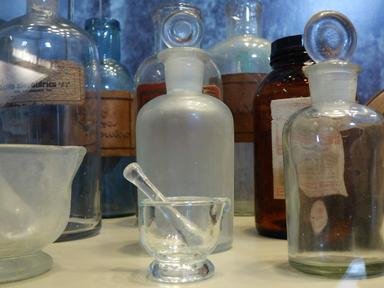Quiz Answer Key and Fun Facts
1. This element is well known by scientists for being radioactive and used to be commonly used as an additive to the paint used to paint the Roman numerals on old clock faces.
2. Humans tend to avoid this element, due to its relative scarcity and huge price. The Actinide series derives its name from this radioactive element's name.
3. This element is also radioactive. Years of unprotected contact with this element contributed to the death of Marie Curie.
4. History records that this element was first documented by Albertus Magnus in 1250. One use for this element was for it to be rubbed into the face of Victorian women to improve their complexion.
5. This element rarely occurs in nature and is not known to be useful to either humans or plants.If ingested, it can cause severe allergic disease in humans.
6. This element was first synthesised by Peter Armbruster and Gottfried Munzenberg, a pair of physicists working at the Gesellschaft Fur Schwerionenforschung in Germany, in 1994 and formerly known as Ununnilium.
7. This element was also first synthesised by Peter Armbruster and Gottfried Munzenberg, but in 1982. Historically, it has the name of Eki-Iridium.
8. This is a rare element. It was first discovered in 1843 and is used as a colourant in art glass.
9. Along with Protactinium and Lanthanum, this element's existence was predicted in 1869 by Dmitri Mendeleev.
10. Thomas Charles Hope first discovered this element in 1798. It is named after the Scottish village where it was first discovered.
Source: Author
matthewpokemon
This quiz was reviewed by FunTrivia editor
crisw before going online.
Any errors found in FunTrivia content are routinely corrected through our feedback system.

